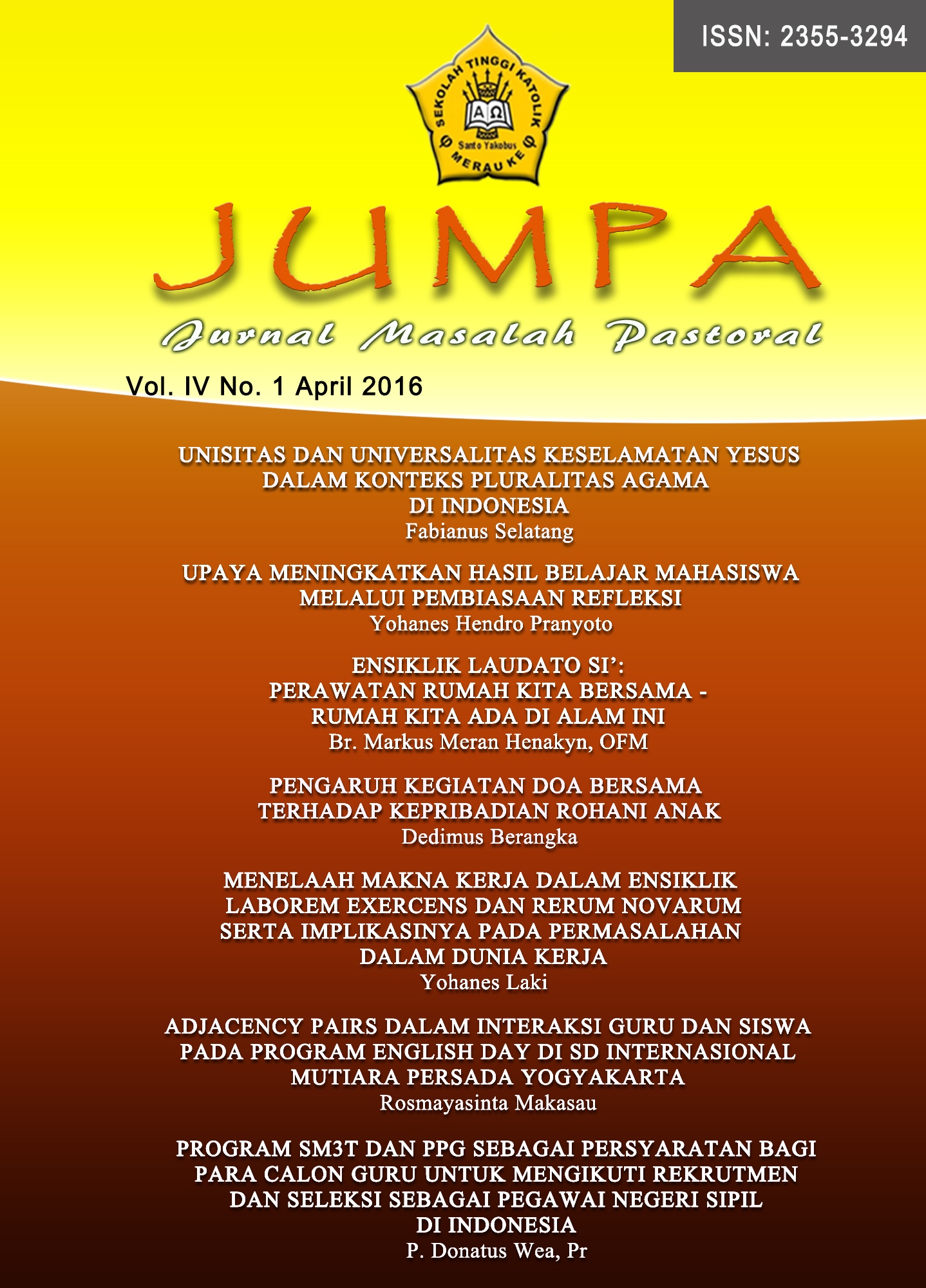Adjacency Pairsdalam Interaksi Guru Dan Siswa Pada Program English Day Di Sd Internasional Mutiara Persada Yogyakarta
DOI:
https://doi.org/10.60011/jumpa.v4i1.24Keywords:
adjacency pairs, interaction, English Day ProgramAbstract
This study focused on the adjacency pairs in teacher-students interactions in an English Day Program. The aims of this study are to find out the language functions and the types of adjacency pairswhich dominantly occured in teacher students interaction in the English Day program at Mutiara Persada international elementary school. The research addressed a research question: What types of adjacency pairsdominantly occur in teacher-student interaction in the English Day program at Mutiara Persada international Elementary School Yogyakarta? Unlike most other elementary schools in Indonesia, this school has an English Day Program on Saturdays. The participants in this research were the 23 students of grade IV and a non-native English teacher. The analysis results show that the greatest amount of teacher talk in indoor and outdoor category is primarily due to an emphasis on giving information and giving instructions. In contrast, student talk in indoor and outdoor categories are largely in the functions of responding physically and acknowledging. The findings revealed that the types of adjacency pairsfound in teacher student interactions in indooroutdoor category include, among others, giving information /acknowledging, giving instruction, question/ answer, inviting/ accepting, asking and showing attention, greeting, etc. There are more than 10 types of adjacency pairsfound in the current study compared with the 6 types found by the previous researchers. Those types of adjacency pairswill enrich teacher’s strategies in provoking interactions with students in order to foster learning.
References
Ellis, R., The Study of Second Language Acquisition: Second. Edition.Oxford: Oxford University Press, 2008.
Hatch,E., Discourse Analysis and Second Language Acquisition. Massachusetts: Newbury House, 1978.
Long, M., The Role of Linguistic Environment in Second Language Acquisition. Handbook of Research on Second Language Acquisition. New York: Academic, 1996.
Nunan, D.,Second Language Teaching and Learning.Boston:Heinle&Heinle Publishers Inc., 1999.
Owocki, G. & Goodman, Y., Kidwatching: Documenting Children’s Literacy Development. Porstsmouth: NH. Heinemann, 2002.
Richards, J. C. & Lockhart, C., Reflective Teaching in Second Language Classrooms. New York: Cambridge University Press, 1996.
Rymes, B., Classroom Discourse Analysis:A tooL for Critical Reflection. Cresskill, NJ: Hampton Press, 2008.
Sacks H. & Schegloff, E., ‘Two Preferences in the Organization of Reference to Persons in Conversation and their Interactions’ in Psathas. Everyday Language: Studies in Ethnomethodology. New York: Irvington Press, 1979.
Sacks H. & Schegloff, E.,‘Opening and closing”, 1973. Semiotica, 289-327.
Tsui, A. B.M., Beyond the Adjacency Pair. Cambridge: Cambridge University Press, 1989.
Thornbury, S.& Slade, D., Conversation: From Description to Pedagogy. Cambridge: Cambridge University Press, 2006.
Watson, J., Reflection Through Interaction: The Classroom Experience of Pupils with Learning Difficulties. London:Falmer Press, 1996.
Wood, L. A & Kroger, R., Doing Discourse Analysis: Method for Studying Action in Talk and Text. California: Sage Publication Inc., 2000.
Yan, X., Teacher Talk and EFL in University Classroom. Chongqing and Yangtze Normal University. China: Published dissertation, 2006.
Yanfen, L. & Yuqin, Z., A Study of Teacher Talk in English Classes. Chinese Journal of Applied Linguistics, Vol. 33 no. 2 thn 2000, pp. 76-86.
Downloads
Published
How to Cite
Issue
Section
License
Copyright (c) 2016 Rosmayasinta Makasau

This work is licensed under a Creative Commons Attribution-NonCommercial-NoDerivatives 4.0 International License.










